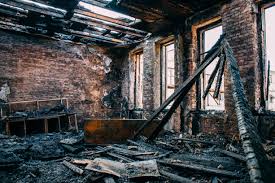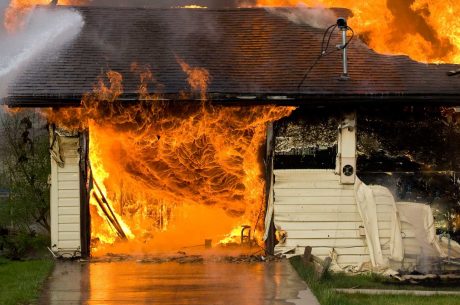Experiencing a fire in your Scottsdale property can be one of the most traumatic events for any homeowner or business owner. But what happens after the flames are out? The fire damage restoration process is an extensive, multi-step journey that can be overwhelming without a clear understanding of what to expect. In this article, we’ll break down the entire timeline, from the moment the fire is extinguished to when your property is restored to its original state. Let’s explore each phase to give you a clearer picture of the road to recovery.
Immediate Actions After a Fire
The first few hours after a fire are crucial. Once the flames are doused and everyone is safe, you’ll need to take a few important steps to ensure the recovery process goes smoothly.
- Safety First: Evacuate the property and don’t re-enter until firefighters give the all-clear.
- Contact Emergency Services: The fire department will secure the area, ensuring it’s safe from immediate hazards.
- Reach Out to Your Insurance Provider: Notify them of the fire to kickstart your claim process.
Phase 1: Emergency Response and Securing the Property
Once the fire is extinguished, emergency responders assess the immediate safety of your property. They may perform emergency tasks like boarding up windows and doors to prevent unauthorized access, setting up fencing, or tarping any exposed parts of your roof.
Phase 2: Assessing the Damage
The next critical step is a thorough assessment of the fire, smoke, and water damage. Professionals from a restoration company will inspect the entire property, looking for:
- Fire Damage: Areas directly impacted by flames.
- Smoke Damage: Hidden soot and smoke particles that have infiltrated walls, carpets, and furniture.
- Water Damage: Firefighting efforts often leave pools of water behind, leading to further damage if not addressed quickly.
The goal of this phase is to get a clear understanding of the scope of the work required and to create a detailed restoration plan.
Phase 3: Smoke and Soot Removal
Smoke and soot are incredibly harmful, not just to your property but to your health as well. Left unchecked, they can cause long-term damage to walls, floors, and even your HVAC system. Most importantly, they cause damage to your health. Restoration experts use specialized equipment to remove smoke and soot, preventing further deterioration.
- Why You Need Professional Help: Smoke can leave behind corrosive residue, and soot can discolor surfaces. Fire odors can linger if they are not properly addressed. Quick action is needed to minimize permanent damage.
Phase 4: Water Damage Restoration
Water damage from firefighting efforts is often one of the most overlooked aspects of fire recovery. However, it can cause just as much damage as the fire itself if not properly managed.
- Water Extraction: Using industrial-grade vacuums, restoration teams remove all standing water.
- Drying the Property: Once the smoke and soot are removed, dehumidifiers and air movers are used to dry out remaining walls, floors, and personal belongings to prevent mold growth.
Phase 5: Structural Restoration and Repairs
Once smoke, soot, and water are under control, attention shifts to structural restoration. This involves repairing damaged walls, ceilings, and floors. Restoration experts will determine whether sections of your home need reinforcement or complete replacement.
- Safety Is Key: Ensuring the structural integrity of your home is critical. No corners should be cut in this phase to avoid future problems.
Phase 6: Content Restoration
Personal belongings may have been severely affected by smoke, fire, or water. However, not everything needs to be thrown away. Restoration companies offer content restoration services to salvage:
- Furniture: Can often be restored with deep cleaning methods.
- Electronics: May require specialized treatment to ensure proper function.
- Clothing and Textiles: Can be cleaned and deodorized.
Phase 7: Mold Prevention
Because of the water used to extinguish the fire, mold is a real concern. Mold can begin growing within 24 to 48 hours in moist environments, so this step is all about ensuring your property stays dry and mold-free.
- Antimicrobial Treatments: Applied to affected areas to prevent the spread of mold.
- Moisture Monitoring: Professionals use sensors to ensure all affected areas are fully dried out.
Phase 8: Air Quality Improvement
Once the fire and water damage are under control, the air inside your property may still be filled with harmful particles, odors, and chemicals. This is where air purification comes in.
- HEPA Filtration: Used to capture airborne particles that could be hazardous to your health.
- Ozone Treatment or Thermal Fogging: To neutralize lingering odors and deodorize the entire space.
Phase 9: Final Cleaning and Sanitization
At this point, the property undergoes a final deep cleaning. Every surface is wiped down, floors are scrubbed, and any remaining smoke or soot is removed.
- Thorough Sanitization: The entire property is sanitized to ensure it’s safe for re-entry.
Phase 10: Reconstruction
The final phase of fire damage restoration is the reconstruction of any fire-damaged sections of your home. This could range from simple repairs like replacing drywall to major reconstruction of entire sections of the property.
- Rebuilding the Damage: Depending on the extent of the damage, reconstruction could take weeks or months.
Restoration Timeline Overview
The timeline for fire damage restoration varies based on several factors, such as the size of the property, the extent of the damage, and the availability of materials for reconstruction. On average, homeowners can expect the following timeframes:
- Emergency Services & Securing the Property: 1-2 days
- Damage Assessment: 1-3 days
- Smoke & Soot Removal: 3-7 days
- Water Damage Restoration: 5-10 days
- Structural Restoration & Repairs: 1-3 weeks
- Content Restoration: 1-2 weeks
- Mold Prevention & Air Quality Improvement: 3-5 days
- Final Cleaning & Sanitization: 2-3 days
- Reconstruction: Several weeks to months, depending on the extent of the damage
Why Choose Puroclean Restoration Specialists?
If you’re facing the aftermath of a fire in Scottsdale, choosing the right restoration company is crucial. Puroclean Restoration Specialists have the expertise and local knowledge to provide timely, effective solutions tailored to the specific needs of Scottsdale property owners. With a focus on professionalism, safety, and customer satisfaction, they’re your best choice for restoring your property to its pre-fire condition.
Conclusion
The road to recovery after a fire can be long, but knowing what to expect can make it less stressful. By following this restoration timeline and partnering with trusted professionals like Puroclean Restoration Specialists, Scottsdale property owners can rebuild and restore their homes and businesses with confidence.
FAQs
1. How long does the fire damage restoration process take?
The process can take anywhere from a few weeks to several months, depending on the extent of the damage.
2. Will my insurance cover fire damage restoration?
In most cases, yes. However, it’s essential to consult with your insurance provider to understand the specific terms of your policy.
3. Can smoke damage be fully removed from my property?
Yes, with professional help. Smoke and soot removal is a critical part of the restoration process and can be effectively handled by experts.
4. Is it safe to stay in my property during the restoration process?
It’s generally not recommended. Fire damage restoration involves cleaning chemicals and structural repairs, which may pose health and safety risks.




 PuroClean Restoration Specialists
PuroClean Restoration Specialists